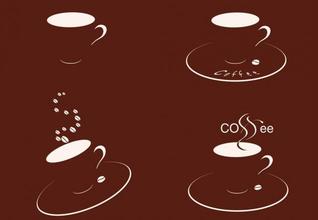Introduction to the techniques and techniques of making Italian Coffee Powder and the characteristics of taste varieties
Coffee making
1. The bean warehouse of the bean grinder should be filled as much as possible, or at least half of the capacity.
The reason is that this ensures a more uniform grinding. But individual players, if they put so many beans into the bean warehouse at one time, they may not be able to drink them for half a month. Isn't it not fresh? I used to weigh the beans every time, and then grind them all at once. Open a shop, the output is large, I also think the way to fill the bean warehouse is better. But after all, I don't run a shop, it's just for household use. Which method do you think is the most suitable for family players?
2. When powdering, the practice of knocking powder bowls on piers has been eliminated.
The reason is that pier knocking can easily lead to the concentration of fine powder at the bottom of the powder bowl, resulting in a decrease in the extraction rate. But during extraction, hot water flows from top to bottom, and the temperature above should be higher than that below. If you don't knock down the fine powder, will it produce extraction on the upper layer of the powder? And, even according to him, after pier knocking, I think the fine powder is concentrated at the bottom, which will clog the mesh of the powder bowl, resulting in a slower flow rate, which should be over-extracted as a whole. It is puzzling why he said it would lead to a decrease in the extraction rate. However, watching the video of the 14-year WBC champion, he received the powder three times, each time pausing in the middle, tapping a few times on the handle bracket of the bean grinder, basically shaking the flour flat before continuing to pick up the powder. The last time I received the powder, it was piled into a hill, which seemed to press the powder directly with a few clicks.
3. Is it necessary to wrap powder and flatten it?
Most of the posts and blog posts I read are to pick up an excessive amount of powder in a powder bowl, then wrap the powder into a hill, flatten it, and then press it. However, watching the video of the WBC champion, it seems that he did not do the action of wrapping powder or smoothing, but, as mentioned in Article 2, he received the powder three times, gently tapped the powder in the middle, and slightly smoothed the powder face (not completely flat, the middle was still high), and pressed the powder. Also, if you use the way of weighing the beans first, and then grinding them at one time, then if you do the action of powder wrapping and smoothing, the weight weighed in front of you will not be allowed. How do you actually operate it? can you talk about the impact of these modes of operation on the production?
4, pressing powder, first light pressure leveling and then heavy pressure, or first heavy pressure compaction and then light pressure leveling, or skillful action after direct one-step pressure in place, some people say that there is never heavy pressure. Including the amount of powder, some people say that after pressing the powder, the powder can not contact the water distribution network, while others say that contact with the water distribution network can avoid the channel effect. When actually doing it, I feel that I do not touch the water distribution net. When the handle is taken off immediately after extraction, the upper layer of the powder is very wet. When I touch the water distribution network, the whole pressed powder is relatively dry. So I'm lost here.
How do you actually operate it, and what is the impact on the product?

Important Notice :
前街咖啡 FrontStreet Coffee has moved to new addredd:
FrontStreet Coffee Address: 315,Donghua East Road,GuangZhou
Tel:020 38364473
- Prev

When can the roasted coffee beans be drunk? how many days do you need to keep them?
Introduction to coffee roasting knowledge 1. Control the baking degree with time and constant attempts in exchange for success. (for example, I-ROAST) try roasting several times by adjusting the time on the machine, or by controlling the baking degree recommended by the manufacturer. Then adjust the baking degree according to the decreasing time. If you think this baking is too sour and too bright, then next time
- Next

Introduction to the planting requirements of natural weather for the yield of coffee trees
The yield of coffee trees on the requirements of natural weather is introduced to Xinglong, which is to try the authentic Xinglong coffee. On May 1, Yang Huining, a tourist from Heilongjiang, specially went to Xinglong to taste the coffee praised by Premier Zhou. Dong Yunping, associate researcher of the Chinese Academy of Tropical Agricultural Sciences and director of the Coffee Research Center, told reporters that with the rising tourism fever in Hainan in recent years, our province has
Related
- Beginners will see the "Coffee pull flower" guide!
- What is the difference between ice blog purified milk and ordinary milk coffee?
- Why is the Philippines the largest producer of crops in Liberia?
- For coffee extraction, should the fine powder be retained?
- How does extracted espresso fill pressed powder? How much strength does it take to press the powder?
- How to make jasmine cold extract coffee? Is the jasmine + latte good?
- Will this little toy really make the coffee taste better? How does Lily Drip affect coffee extraction?
- Will the action of slapping the filter cup also affect coffee extraction?
- What's the difference between powder-to-water ratio and powder-to-liquid ratio?
- What is the Ethiopian local species? What does it have to do with Heirloom native species?

